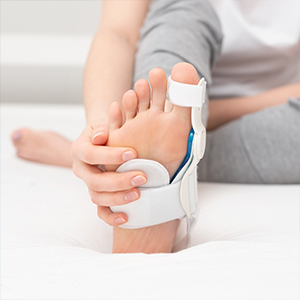Orthopaedic deformity correction is a specialized area within orthopaedic surgery that focuses on identifying, assessing, and treating various skeletal deformities in patients of all ages. These deformities can result from congenital abnormalities, injuries, infections, or degenerative conditions that affect the musculoskeletal system. The primary goal of orthopaedic deformity correction is to restore normal function, alleviate pain, and improve the patient's overall quality of life.
Assessment and Diagnosis:
Before initiating any treatment plan, Deformity correction doctors in Vijayawada perform a thorough evaluation of the patient, which may include:
- Medical history : Understanding the patient's medical background, including any previous treatments or surgeries, is essential for accurate diagnosis and treatment planning.

- Physical examination : A detailed examination of the affected area, including range of motion, muscle strength, and joint stability, helps identify the deformity's extent and potential causes.
- Imaging studies : X-rays, CT scans, and MRI scans provide valuable information about the deformity's severity, location, and impact on surrounding structures, aiding in treatment decision-making.
Treatment Approaches:
Non-surgical interventions : In some cases, non-surgical treatments can help correct or manage deformities. These may include:
- Casting and bracing : Custom-made orthotics or braces can help align bones, correct deformities, or immobilize injured areas to promote healing.
- Physical therapy : Tailored exercise programs can help improve muscle strength, flexibility, and overall function in patients with musculoskeletal disorders.
Surgical interventions : When non-surgical methods are insufficient, orthopaedic surgeons may opt for Bone deformity correction surgery in Vijayawada to correct deformities. These surgeries can be classified into:
- Osteotomy : This involves cutting and repositioning a bone to realign it with the surrounding structures, reducing deformity and improving function.
- Arthrodesis : Fusing the affected joint can help stabilize and realign the bones, providing pain relief and improved function.
- Joint replacement : In cases of severe joint damage or arthritis, surgeons may replace the damaged joint with an artificial prosthesis to restore function and alleviate pain.
Post-operative care : Following any orthopaedic deformity correction surgery, patients require careful monitoring and rehabilitation to ensure optimal recovery. This may involve:
- Pain management : Controlling post-operative pain is crucial for patient comfort and facilitating a smooth recovery.
- Physiotherapy
- Regular follow-ups : Patients need to attend regular check-ups to ensure proper healing, monitor progress, and address any complications that may arise.
In conclusion, orthopaedic deformity correction plays a vital role in restoring normal function and improving the quality of life for patients with skeletal deformities. Through a combination of advanced diagnostic techniques, tailored treatment plans, and comprehensive post-operative care, orthopaedic surgeons can effectively manage and correct these conditions, providing long-lasting relief and improved mobility for their patients.
